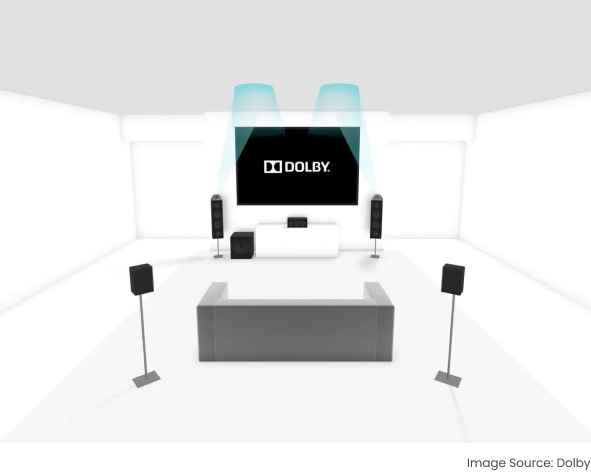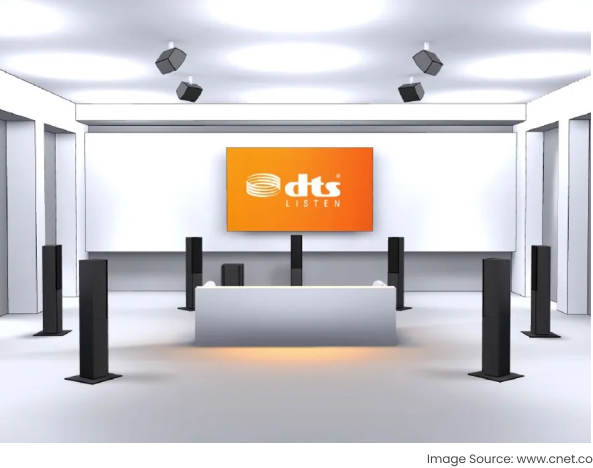Types Of
Television

Television is a versatile technology you can install in your living room, kitchen, or bedroom. If you’re moving into a new home or looking to upgrade your existing television, you need to know what kinds of television are available and which are the best.
But, what are the different types of TVs? In this guide, we will discuss the main types of television, along with the pros and cons of each – keep reading to focus on the types of TVs explained.
screen Shapes
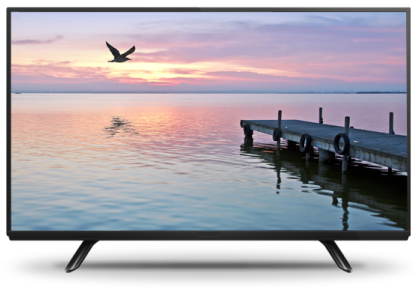
Understanding which screen shape you want is one of the first steps in deciding which kinds of TVs you need. Below are the two main screen types you can choose from.
There are different kinds of TV shapes, and you need to know which is best – curved screen vs. flat.

Flat
The classic and most popular types of TVs are flat TVs. The standard flat TV is versatile, it can be mounted on a TV stand and placed on your cabinet, or you can use a wall mount to make it blend seamlessly with your interior design.
The flat TV is the most well-known type of television and will be more widely available than its curved counterpart.
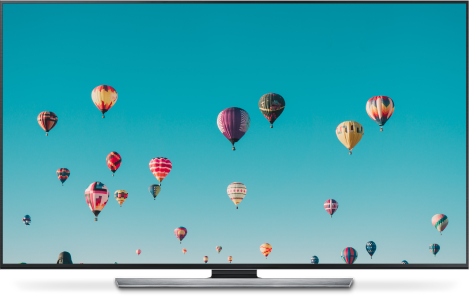
You can get flat TVs in any size, from large to small, which allows you to choose a TV size that suits the size of the room in which you will place it.
Flatscreen TVs are usually sleek and slender, depending on the design and brand you opt for.
THE PROS
Here are the main pros of flat TVs:
- Easy to find – the flat TV is more widely accessible when considering curved vs. flat screen, and you can find one in any store that sells TVs.
- Easy to mount – the shape of flat TVs makes them much easier to mount on the wall than any other kind of TV. When it’s mounted, the TV will be flush to the wall for a more streamlined look that will take up less space.
- Lightweight – flat TVs are lightweight, which means they take up.
- Sleeker – flat TVs are thin, elegant, and slender, often considered more attractive than bulky and oversized TVs.hen considering curved vs. flat screen, and you can find one in any store that sells TVs.
- Increased choice – since flat-screen TVs are standard, there is a wide variety of options regarding size, make, model, and picture quality.
- Lower price – the range of choice with flat TVs means more choice. You can opt for lower spec flat TVs to suit your budget.
- More visibility for multiple viewers – with a flat TV, anyone in the room will get a clear view of the picture, no matter the angle.
THE CONS
Here are some of the downsides to choosing a flat TV:
- Glare – with a flat TV, there will be more glare from lights, lamps, and windows.
- Darker at proximity – the closer you sit to a flat TV, the darker the image can appear.
- A smaller field of view – a flat-screen TV will not give you a wide field of view compared to a curved screen.
- Sleeker – flat TVs are thin, elegant, and slender, often considered more attractive than bulky and oversized TVs.hen considering curved vs. flat screen, and you can find one in any store that sells TVs.


Curved
Curved TVs are TV screens shaped differently from a flat screen, with a C-shaped curve bends the screen’s shape in a concave form to create a more immersive viewing experience.
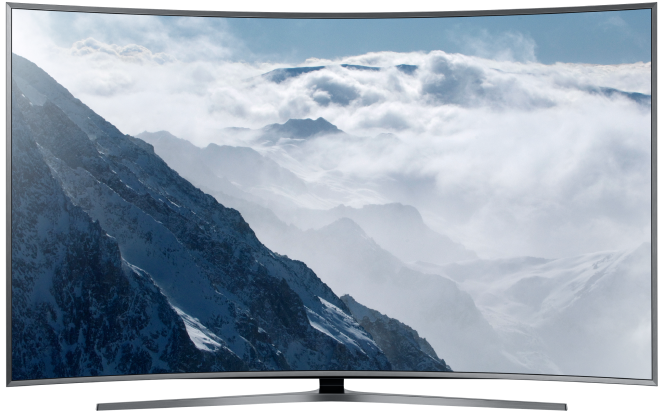
THE PROS
Here are some of the main benefits plasma TVs can have for the modern user.
- Wider viewing angle – the curved TV gives you a wider field of view. The curved screen captures most of your peripheral vision, similar to when visiting a movie theater.
- Reduces glare – a curved TV screen will reduce any glare from windows or lamps in the room.
- Better for sitting close to the screen – if you need to sit close to the screen, this could reduce visibility, as part of the screen may be in your peripheral view. However, with a curved TV, your peripherals are still engaged. This is what makes a curved TV such a good choice for gaming.
- Sleeker – flat TVs are thin, elegant, and slender, often considered more attractive than bulky and oversized TVs.hen considering curved vs. flat screen, and you can find one in any store that sells TVs.
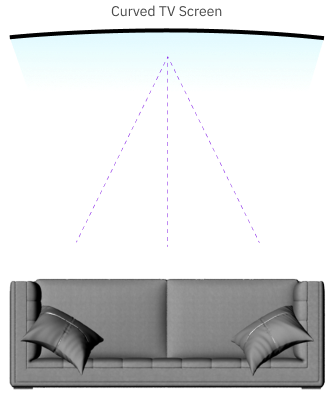
THE CONS
Now, let’s look at some downsides to opting for a curved TV.
- Not as popular – curved TVs may be more difficult to find than flatscreens, as they are not as popular and therefore you will not find them at as many stores.
- More expensive – since they are a relatively new concept, and require more costly materials, curved TVs can be more expensive.
- Hard to set up – it can be pretty challenging to figure out where to place your curved TV so that it blends in with the room’s decor and maximizes visibility.
- Not as mountable – the curved shape of the TV will make it more difficult to mount it on the wall successfully.
- Image distortion – if you are not sitting close enough to the curved TV, the image may appear distorted.
- Poor experience for multiple viewers – if you have numerous viewers seated around the TV, only one or two viewers will be able to access the optimal viewing position. The rest will only be able to view a distorted image.
Screen Technology
-old

Now, if you’re looking for a more affordable television, you might be tempted to opt for an older or a second-hand screen. This section will discuss types of old TVs to help you find the best old television.

Direct View
- Cathode Ray TVs (CRT)
Cathode ray TVs are televisions that companies manufactured until the early 2000s. They stopped making screens of this type in 2015.
The cathode ray TV preceded the flat screen display and operated using a cathode ray tube that would light up with streams of electrons known as cathode rays, projected onto a phosphor-coated screen which lights up the rays to create the image we see as a viewer.
Mostly, people opt for newer screen technology, but some still buy CRT screened as collector’s items for retro gaming.
Now, let’s discuss the pros and cons of cathode ray TVs.
THE PROS
Here are the advantages offered by a CRT.
- Inexpensive – because they are outdated, CRTs are highly affordable. Those looking for an affordable option would benefit from investing in a CRT.
- Traditional TV experience – if you want a nostalgic and familiar TV experience, then a CRT will give you that classic feel.
- Long-lasting – compared to more modern TV technologies, CRTs are incredibly long-lasting, which is why many of these vintage TVs are still helpful today.
- Retro gaming – if you’re looking to experience retro games the way gamers used to play them, you can get a blast from the past with a CRT.
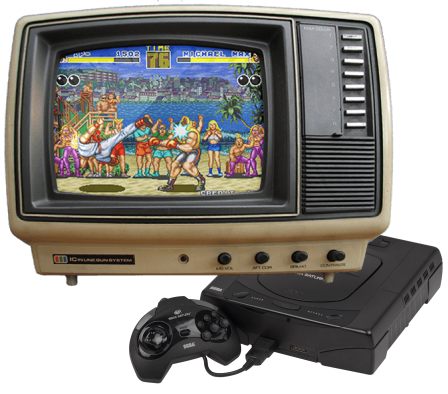
THE CONS
Here are some of the drawbacks of investing in a CRT.
- Bulky and heavy – CRTs can be pretty bulky and heavy, which makes them less ideal if you’re looking to keep your home’s interior clean-cut and minimalist.
- High energy consumption – CRTs are not very energy efficient, and it takes a fair bit of energy to keep them running, which could cause your energy bills to rise if you’re an avid TV watcher.
- Bad picture quality – the picture quality of cathode ray TVs does not stand up well in the face of more modern TVs.
- Not as mountable – the curved shape of the TV will make it more difficult to mount it on the wall successfully.
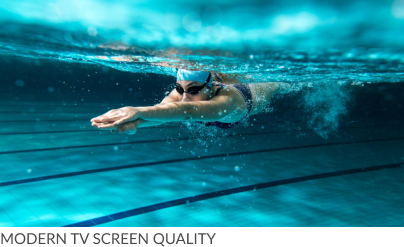
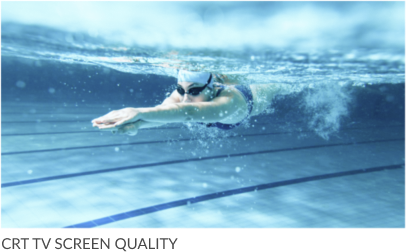

Plasma (PDP)
Plasma is one of the types of old television that has been around since the early 1990s and was a popular choice until about 2007.
The term plasma refers to an ionized gas that responds to electricity.
Developers used the plasma gas to fill up the screen, which was structured in grid form to allow different colors to create an image. Each plasma grid would light up, creating a network of pixels to translate images to the screen.
The plasma screen was the leading choice for high-end television in the 90s and early 2000s. They ceased making this type of screen technology in 2015. However, many still purchase plasma screens due to their high quality.
THE PROS
Here are some of the main benefits plasma TVs can have for the modern user.
- Excellent picture quality – the picture quality of plasma TVs is outstanding, with rich blacks and high color contrast. The PDP stands up well today regarding picture quality and is more vibrant than LCD.
- Excellent viewing angles – older tv technologies usually don’t have wide viewing angles, but the plasma TV allows viewers to enjoy a more precise picture when sitting at an angle.
- High refresh rates – a plasma TV will offer you high refresh rates of 60Hz, plus it works to smooth out the motion response by sending repeated electric pulses that ensure each pixel remains lit consistently during each frame.
- Durable – the plasma TVs created before 2015 are still operating and perform at optimal capacity. This factor makes them ideal for those looking for a durable screen.
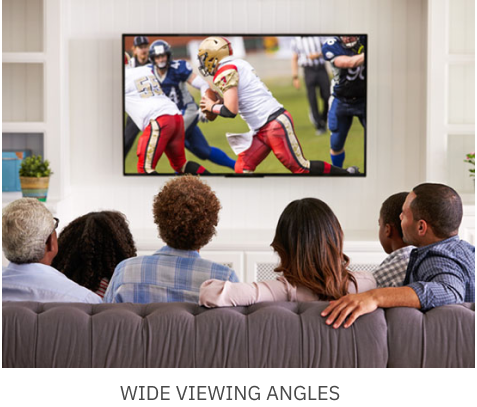
THE CONS
The plasma TV does have its disadvantages. Here are the cons of plasma screens.
- Expensive – plasma TVs are surprisingly expensive, even today. They are more costly than other types of old screen technology.
- Heavy compared to LCD – plasma TVs are heavy compared to LCDs and can be pretty thick, so mounting them can be tricky.
- You cannot use it in extreme temperatures – if the weather is below 50 degrees Fahrenheit or above 104 degrees Fahrenheit, you may not be able to operate your TV. Plasma TVs can also get quite hot after prolonged use, which can contribute to the heat in your home.
- Prone to screen burn-in – when plasma screens were standard, many users noticed that the logo of their favorite channels was burned into the screen, clearly visible even when they were watching something else. For instance, many Americans saw the FOX News logo burned into their television screen if they watched the station daily.
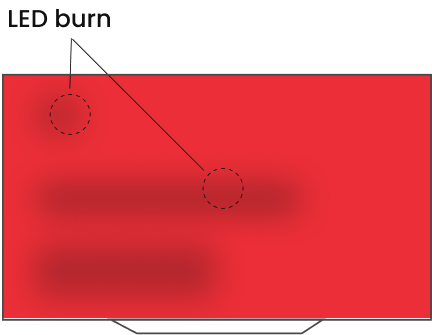

Liquid Crystal Display
(LCD)
Liquid crystal display technology is similar to LED technology. Both screens use the same technology, but the screen’s backlighting differs. LED technology has surpassed liquid crystal display (LCD) to become one of the leading screen technologies.
LCD screens used cold cathode fluorescent lamps to light the screen. LCD LED screens, however, use an array of LED lights to backlight the image, which is a more efficient method – making LED the dominant technology.
LCD screens use liquid crystals combined with polarizers to translate images onto the screen.
The screen contains substrates which are three polarized glass panels with liquid crystals in between them. These panels are in three colors – red, blue, and green.
When the current passes through them, the crystals rotate to align with a panel and shine light through it, which is how we see colors and images.
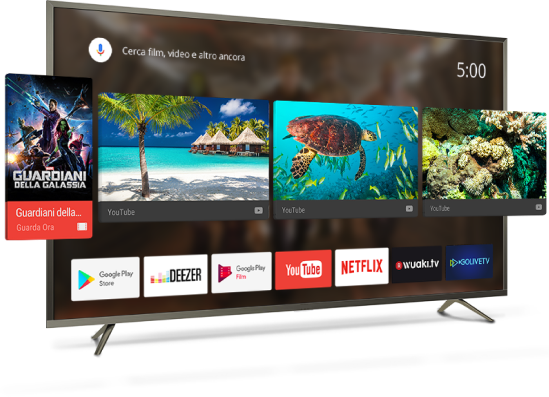
LCD television screens were created in the 1980s but didn’t become popular until around 2007.
THE PROS
Here are some of the main advantages of investing in an LCD TV.
- Variety of sizes – the LCD screen technology is available in various sizes, as the technology supports both smaller screens and screens of a larger scale.
- Affordable – LCD television is inexpensive compared to older and newer TV technologies, even LED screens.
- Thin and lightweight – LCD screens are thin and light, which makes them easy to place in your home or mount on a wall.
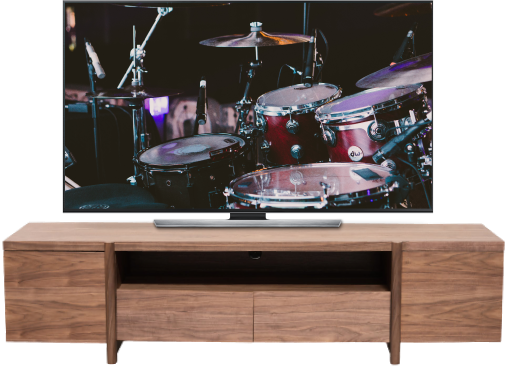
THE CONS
Here are the downsides of choosing an LCD television for your home:
- Vibrance – the LCD television technology does not show images as vibrantly as the LED screen. Those who are used to an LED screen may find the pictures dull.
- Difficult to find – LED screens have mostly replaced LCD screens, and they share a name due to the similar nature of the technology. This shared name makes it extremely difficult to search for an LCD screen online.
- Heavier than LED – the LCD screen is heavier than an LED screen, making it more difficult to mount on the wall.
- Less energy-efficient – LED screens to have the LCD screen beat regarding energy consumption. If you want to reduce your carbon footprint or monthly energy bills, an LCD screen might not be the right choice.
- Burn-in – like plasma screens, LCD screens can cause burn-in for channel logos.
- Limited viewing angle – the LCD screen does not have the optimal viewing angle, so an expansive living room arrangement may not be compatible with this type of TV screen.
- Contains mercury – mercury is not only a harmful and poisonous substance, but the extraction of mercury is highly damaging to the environment.
Screen Technology
-Current
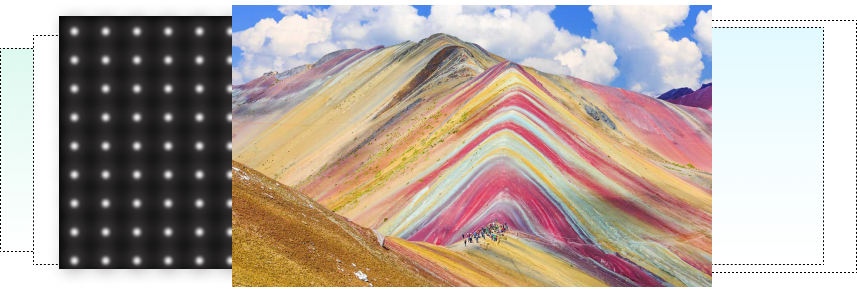
If you want to purchase a new type of TV, you can check out these new types of television. Use the pros and cons of each to determine which of these new types of televisions.

Light-Emitting Diode
(LED)
If you want The LED television is often called an LCD television, as both types of television operate using the same methods. However, the LCD, as we mentioned earlier, has a different way of backlighting.
The LED television is currently the most popular choice for modern and high-quality television.
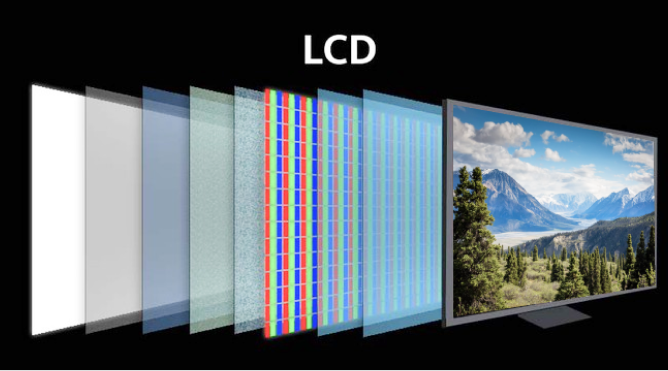
The TV screen is illuminated by thousands of light-emitting diodes or LEDs that light up each pixel on the screen.
The LED TV is available in a wide range of sizes and high-definition or ultra-high.
There are a few subtypes when it comes to LED screens:
EDGE-LIT
– two rows of LED light the screen pixels from each side.
This lighting method can cause light to bleed from different areas of the screen, and the LED cannot replicate the contrast between light and dark as well as full array screens because the lighting is coming from the same place and angle.
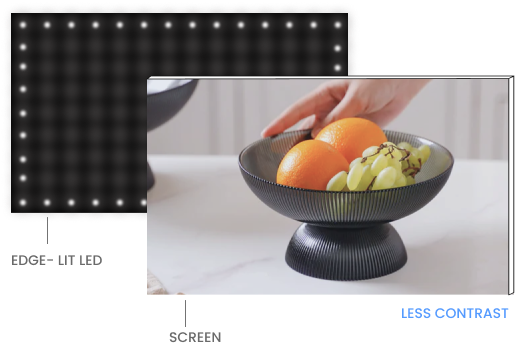
FULL ARRAY
– the full array screen is backlit with LED lights positioned evenly behind the screen.
Full array improves the contrast as the light can brighten and darken in the specific areas that require it. Depending on the frame, the dimming and lighting of areas are referred to as local dimming, which isn’t possible with edge-lit LED screens.
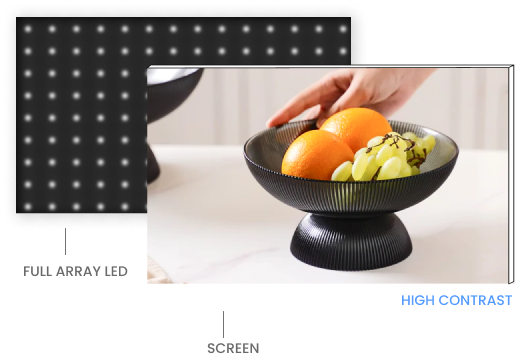
THE PROS
- More vibrant than LCD – since the LED screen uses light-emitting diodes, it can implement high RGB contrast, creating more accurate whites and blacks than an LCD screen.
- Energy efficient – the LED screen is energy efficient, much more so than the LCD screen, which makes it a sound choice for those looking to reduce their household energy consumption.
- Easy to find – the LED TV is one of the most popular TV choices in the modern world, making it incredibly easy to find – a simple google search will turn up thousands of results.
- Thin and lightweight – the LED TV is much slimmer and more light than the LCD screen, which makes it incredibly adaptable. You can mount it on a TV stand or a wall mount without difficulty.
- Technology has been expanded – the LED TV technology has adapted and expanded to create more types of LED TVs, the OLED and QLED screens.
- Doesn’t contain mercury – unlike the LCD screen, the LED TV does not contain mercury, which is harmful to both humans and the environment.
- More affordable than expanded versions – the LED TV is more affordable than the OLED and QLED televisions, which makes it a good choice for those on a budget.
THE CONS
The LED screen doesn’t come without a few negatives – so here are the cons of LED screens.
- Expensive – the LED screen is far more expensive than the LCD screen due to its superior contrast quality and vibrancy.
- Requires backlight – the LED screen requires backlighting, whereas the OLED type of LED screen does not require any backlighting.
- Contrast pales in comparison – when compared with OLED and QLED screens, the LED screen’s contrast does not hold up. The contrast is much better on an OLED and QLED screen.
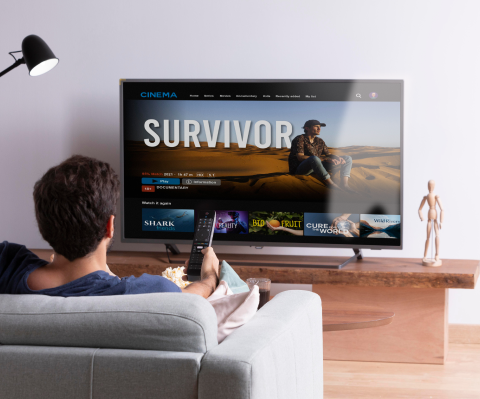

Organic Light
-Emitting Diode Screen (OLED)
The OLED has a unique quality that distinguishes it from any other flatscreen TVs we discussed in this guide – it does not require backlighting.
The OLED screen is made up of organic materials pressed between two conductors. When electricity runs through these conductors, it causes the organic material to emit light. The amount of light produced by the organic material is contingent upon the amount of current running through it.
The OLED screen is relatively modern, which means that these types of TVs usually have smart TV features
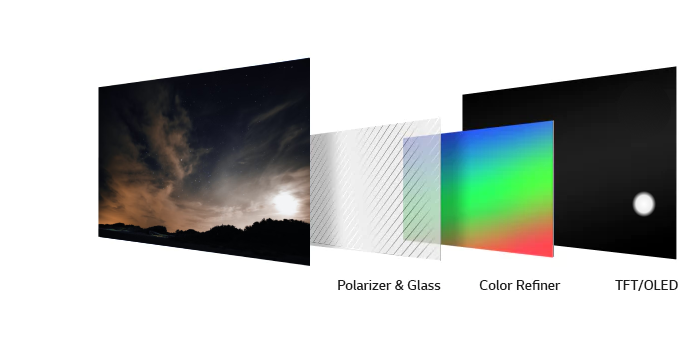
There are two subtypes of OLED screen:
PASSIVE-MATRIX (PMOLED)
– the passive-matrix OLED screen is made up of organic material pressed in between two conductors, and the organic material divides into rows and columns. When a current runs through the conductors, the organic material emits light.
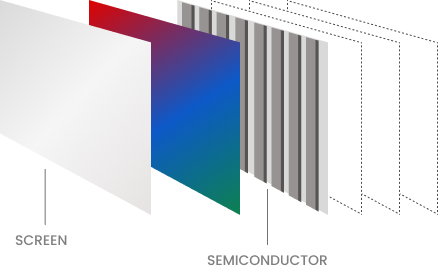
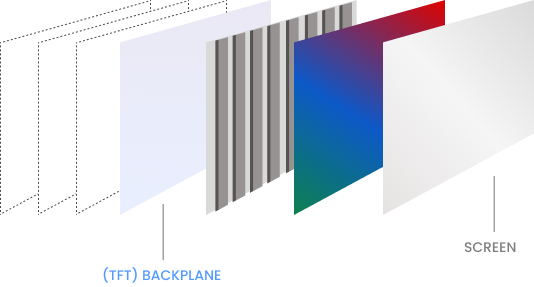
ACTIVE-MATRIX OLEDS
OLEDs – the active-matrix OLED is a little more complex than the passive-matrix OLED. They consist of a thin-film transistor (TFT) backplane, which helps to control where the light is emitted in each pixel for a sharper image. The active-matrix OLED is more commonly used in high-end smartphones than televisions.
THE PROS
- Thinner – the OLED screen is much preferred to the LED or LCD screen in terms of thinness. The OLED screen is much lighter, which makes it more streamlined, blending seamlessly when mounted on the wall.
- More energy efficient – companies have been working on a more efficient way to manage brightness levels, ultimately improving both the energy efficiency and lifespan of OLED displays in the coming years. The OLED screen is more energy efficient than the LED screen.
- Better contrast – the OLED screen has much better color contrast than the LED screen, which results in more accurate whites and truer blacks, improving the overall contrast.
- Excellent viewing angles and refresh rates – the OLED screen can reach higher than 120Hz and has a viewing angle of around 70 degrees from the center, making it ideal for homes with wide-set living rooms.
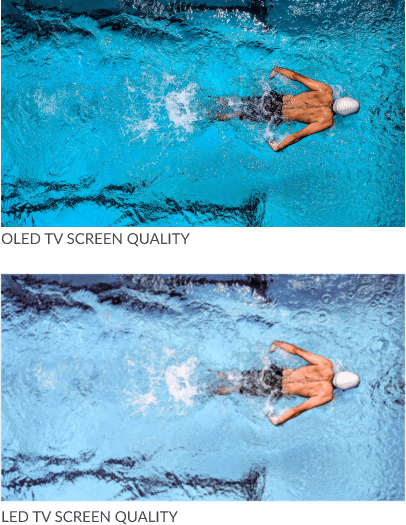
THE CONS
Here are some of the negatives you need to be aware of before investing in an OLED screen.
- Not as bright as LED or QLED – an OLED screen can give you pitch black scenes without blooming as it can emit black light. However, this makes it less visible in bright or sunny rooms, as it is not bright enough to combat direct sunlight.
- More expensive than LED and QLED – the complex arrangement of an OLED TV makes it more expensive than an LED or QLED TV.
- Only available in sizes of 55 inches or more – the OLED TV’s composition is complex, which makes it challenging to translate to screens of a smaller size. Since the OLED is only available in larger sizes, this may contribute to the higher cost.
- Not as mountable – the curved shape of the TV will make it more difficult to mount it on the wall successfully.
- Prone to burn-in – as with other types of the TV screen, the OLED screen is prone to burn-in.
- Longevity is less than QLED – the OLED may not be a lasting investment compared to the QLED screen.

Quantum Light
-Emitting Diode (QLED)
The quantum light-emitting diode screen is the latest technological development in television sets.
The QLED screen is one of the new types of LED TVs that does not use LED backlighting – instead, it uses quantum dots, or semiconductor nanocrystals, which are tiny nanoparticles.
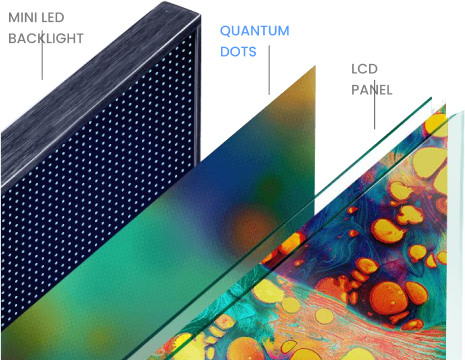
When a current moves through these nanoparticles, they light up to provide impressive color quality.
THE PROS
- More affordable than OLED – the QLED screen is more affordable than OLED due to the different materials required.
- Brighter than OLED – the OLED can appear less visible in direct sunlight or in bright rooms, whereas the QLED screen can achieve higher brightness levels that make it more visible in a bright room.
- Better longevity than OLED – if you opt for a QLED screen, you would gain more longevity on your investment as the QLED screen maintains image quality better over time than the OLED.
- Larger screens than OLED – the QLED is available in a broader range of sizes than the OLED, making it easier to purchase a large OLED than a large QLED.
- Not prone to burn-in – when put to the test, QLED screens do not suffer from burn-in. TV experts have tried casting logos onto the QLED screens for 10 minutes to see if the image would disappear. The symbols disappeared quickly, and QLED screens passed the test.
- More energy-efficient than LED – although LED lights are very energy-efficient, they require more energy than QLED screens.
THE CONS
Here are some of the cons of QLED screens when compared to other screen types
- More expensive than LED – the QLED is the newest screen technology, making it more expensive on average than LED screens.
- Only available in larger TVs – the QLED does not translate to a smaller screen as well as other screen technologies, so it is only available in larger TVs.
- OLED has better contrast and color – the OLED screen has more accurate whites and blacks than the QLED screen, which leads to less clarity.
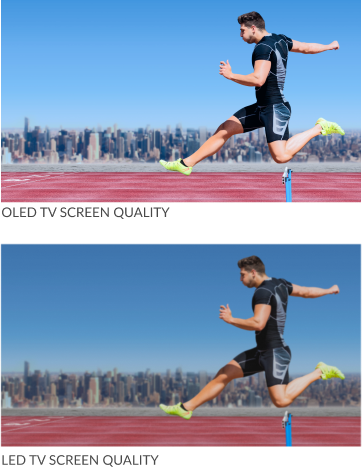
Resolution

The native resolution of a television screen is the number of pixels that make up the screen.
This figure is what determines how clear the image on the screen will appear. Each pixel shows a different color, meaning the more pixels there are, the more detail the screen can convey to the viewer.
The image resolution, however, communicates what transmits to the television. The image resolution is not contingent on the quality of the TV; instead, it depends on the transmission source. Recording the image on the screen or downloading it can affect the image resolution.
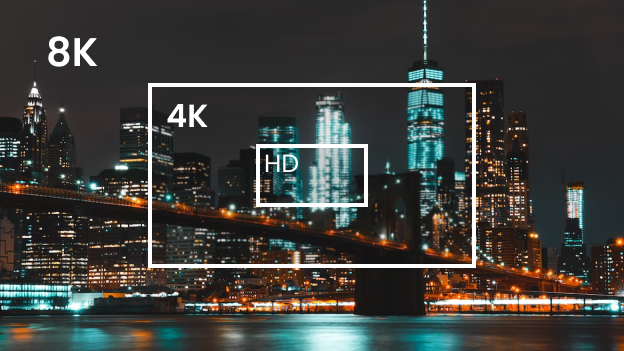
720p (HD)
720p is the lowest resolution type, which is referred to as high-definition. It is a rung above standard definition. Most TV shows are transmitted high definition, which translates seamlessly to an HD television set.
The native resolution is 1280×720 pixels.
This means that the screen displays around 720 rows of pixels at any given time.
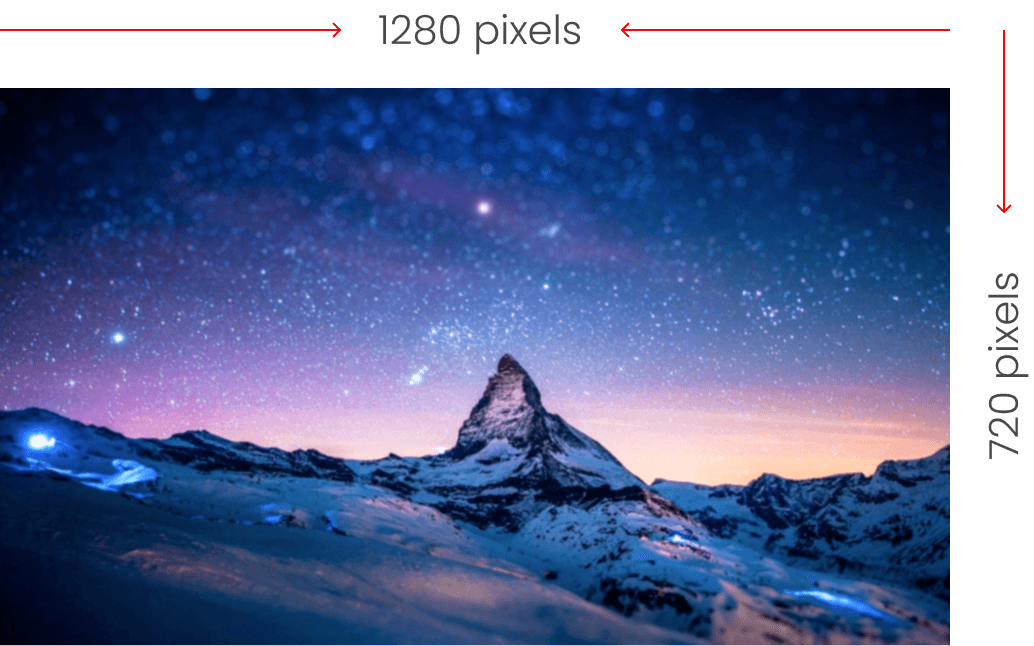
1080p (FULL HD)
The Full HD screen resolution has twice the detail of an HD screen.
It shows 1920×1080 pixels, and full HD TVs usually have a better sound quality and features than HD TVs.
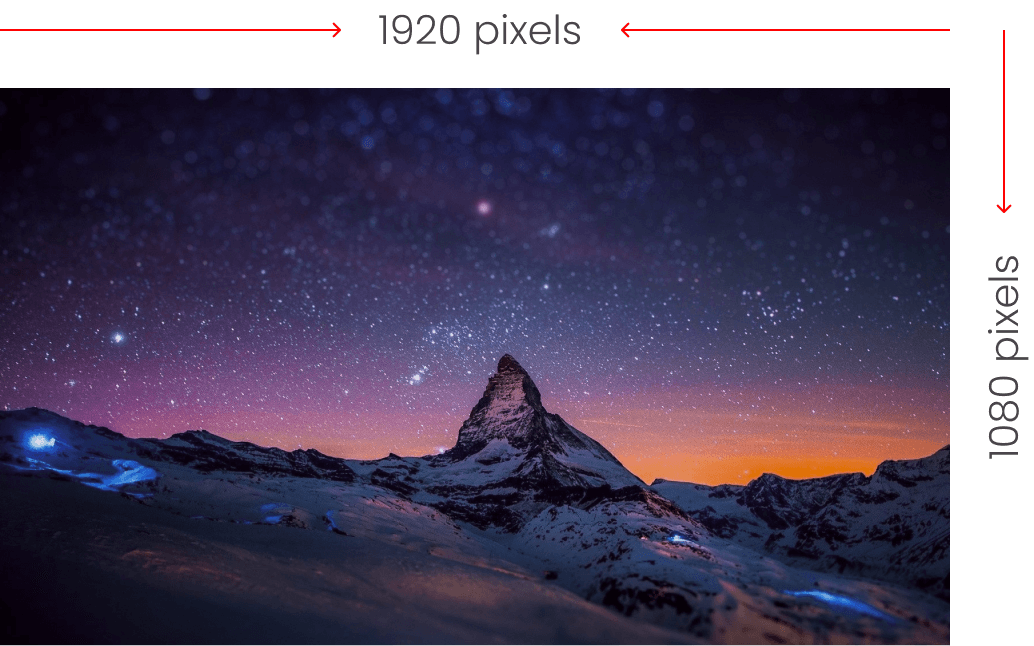
4K (Ultra HD)
The 4k resolution television is also known as the Ultra HD television. It shows 3840×2160 pixels, giving four times the full HD TV’s clarity. With larger screens, you can tell the difference between HD and Ultra HD – so, if you’re opting for a screen larger than 40 inches, you’d probably benefit from an Ultra HD screen.
Most people purchasing televisions right now are opting for Ultra HD resolution.
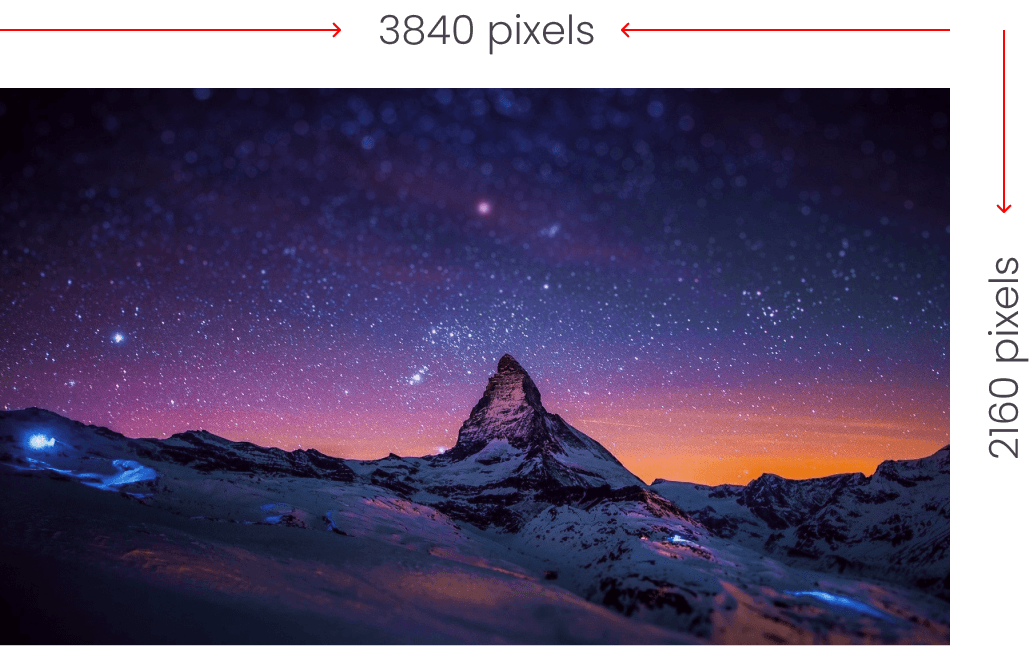
8K (Ultra HD)
The 8K resolution screen is also known as Ultra HD. The 8K screen has 7680×4320, 16 times the resolution of Full HD.
The need for 8K resolution is growing as people are opting for larger-sized screens. 8K screens, however, are expensive and rare.
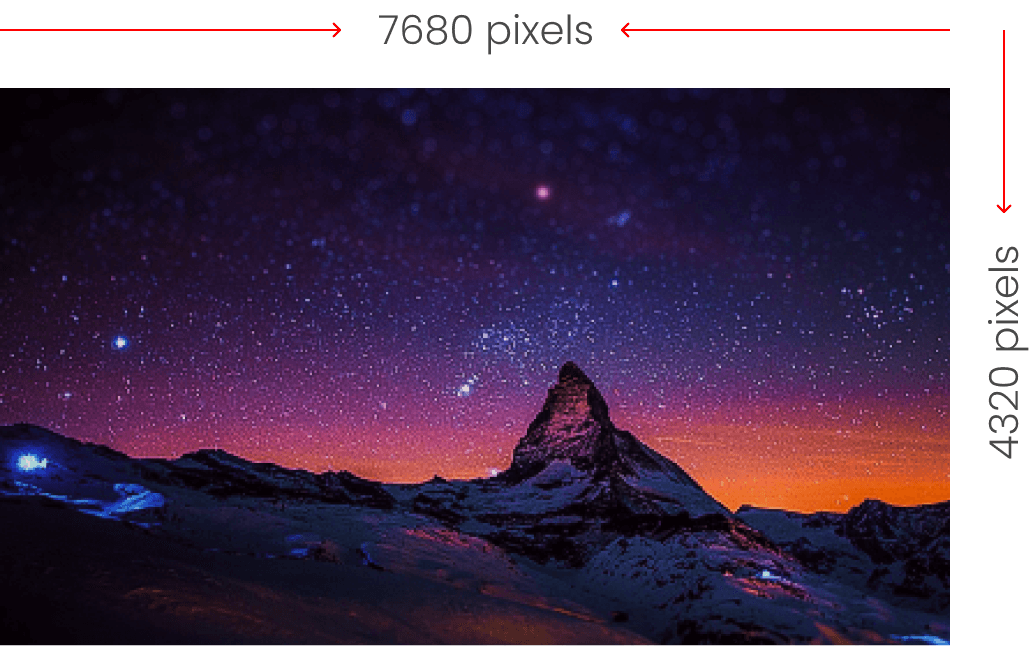
Other TV Features
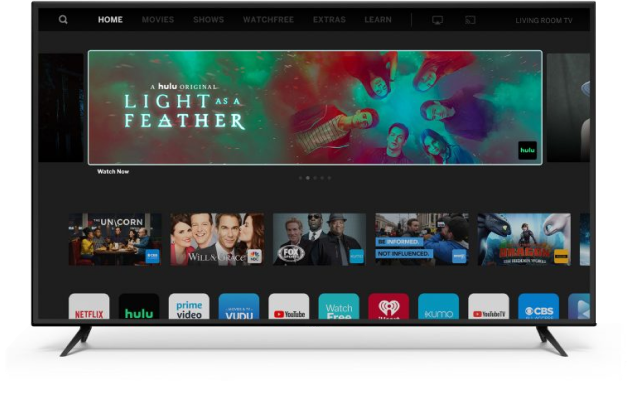
This section will look at other essential features that should factor into your decision when choosing the best television for your home.
SMART TV/ INTERNET
A smart TV is the most suitable choice for the modern viewer as it connects directly to the internet.
It enables the viewer to access streaming services like Netflix, Prime Video, and Disney Plus.
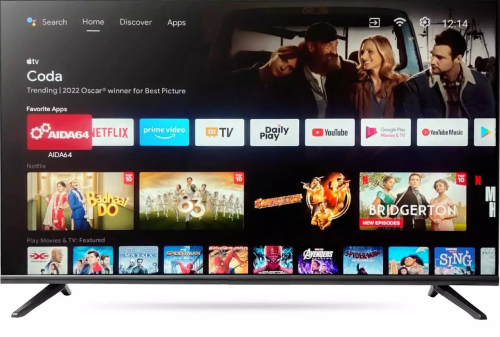
Some smart TVs even allow the viewer to download other apps like Spotify and YouTube for more utility. The viewer can even cast from their mobile phone or laptop to the TV screen, allowing them to use the screen as a monitor or view videos on a larger screen.
HDR (HIGH DYNAMIC RANGE)
A high dynamic range television is an alternative to a standard dynamic range television that offers more contrast and color accuracy, providing a more realistic picture.
Most high-end modern televisions offer HDR as an additional feature, though its utility is up for debate as you can replace it easily with Dolby Vision.
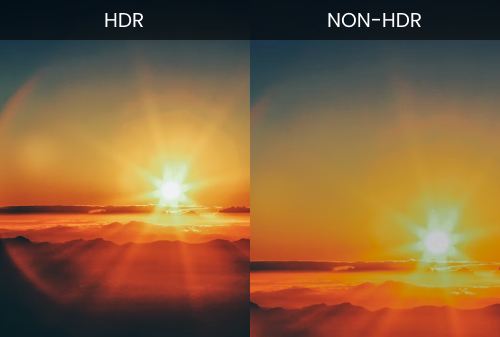
REFRESH RATE
The refresh rate of a screen determines how many frames can be shown on the screen per second, which allows for more fluid moving pictures. The image will appear more smooth and realistic if the television has a high refresh rate.
Here is a list of the most common refresh rate speeds in the latest TV technology and the quality of each:
- 60Hz – this refresh rate speed is the most common as it is the default refresh rate setting.
- 120Hz – this refresh rate is best suited to a large screen, where the refresh rate is more noticeable. It provides a smoother and more photorealistic picture for video content.
- 240Hz – TVs with a 240Hz refresh rate are less common, which makes them harder to find. However, those who wanted a TV with a 240Hz refresh rate could find one with some effort.
- High-frame-rate (HRF) support – this refresh rate is best suited for those looking for a TV to watch live sports. TVs with HRF support have higher than 60Hz refresh rates and support content with higher than 60Hz refresh rates.
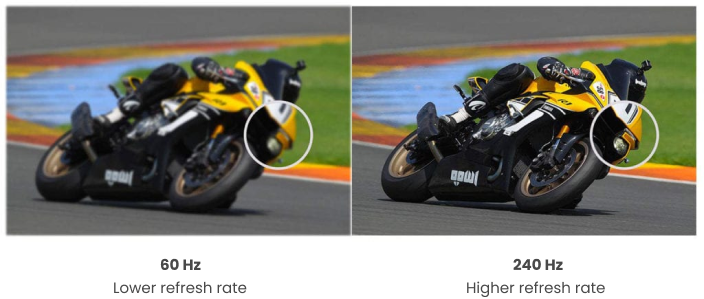
PORTS AND CONNECTIONS
Ports and connections are essential TV features. You might need to check which ports and connections are available to use your TV for various purposes.
Here is a list of the main ports and connections for TVs
HDMI PORTS
An HDMI cable connects a device to your TV, allowing you to cast your screen to the TV without using WiFi or Bluetooth. HDMI stands for ‘High Definition Multimedia Interface’.
If you wish to cast a movie from your laptop to your TV, but do not have a screen casting-enabled laptop, then you’ll need an HDMI cable, and you’ll need to invest in a TV with an HDMI port.
Most modern television sets have multiple HDMI ports labeled HDMI 1, HDMI 2, HDMI 3, and so on. If you have gaming consoles, these might connect to your TV via an HDMI port. So, if you’re an avid gamer, it’s best to look for HDMI ports in any TV you purchase.
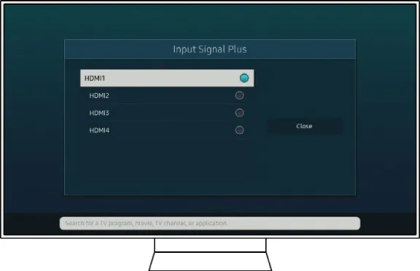
USB
A lot of TVs include a USB port. The USB port can be useful for inserting a hard drive, such as an Amazon Fire stick, into your TV to access the data on the big screen.
You can also use the USB port on your TV as a charging station for your devices, which could be helpful if your living room does not have many outlet sockets. You can also use a USB port on your TV to connect a mouse or keyboard.
WIFI
If you have a smart TV, you won’t get very far if it doesn’t connect to WiFi, as it may be challenging to connect it using ethernet. WiFi helps you to access streaming services and apps and perform internet searches on your TV.
ETHERNET
If you use an ethernet connection in your household, you must ensure that your TV has an ethernet cable port. Or, if you simply want to ensure your TV has a solid connection to the internet, you might benefit from a TV with an ethernet port.
BLUETOOTH
Bluetooth is incorporated into the newest TV technology and allows you to pair headphones, keyboards, a mouse, or speakers to your TV without cables, which can clutter your living space.
Sound Technology
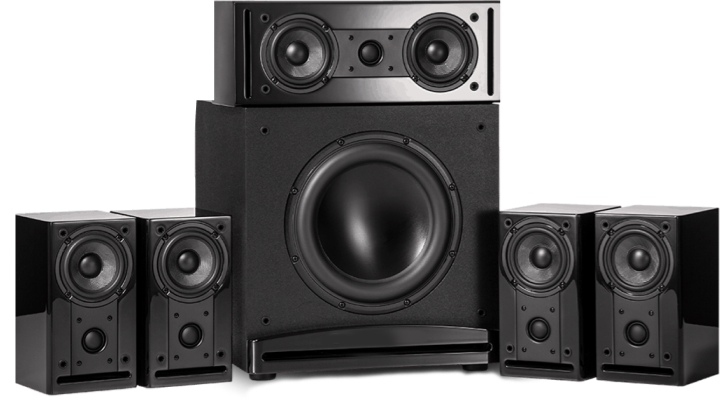
You can improve the sound technology of your new TV technology by investing in additional sound systems, which can create a surround-sound experience and make your films and TV shows more immersive.
Dolby Atmos
The Dolby Atmos allows sounds to be processed as 3D objects.
They use processing algorithms to convert the sound into a 360-degree binaural listening experience – the sounds will be spread across a more comprehensive range between the speakers to give the viewer a more immersive viewing experience.
Conclusion
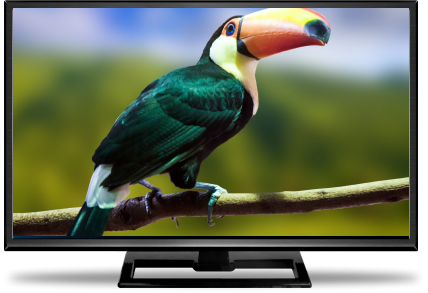
If you’re looking to upgrade your existing TV system, or you’re looking to buy a new TV for your new home, you need to know about the different types of TVs.
Hopefully, this guide has given you an idea of the best new TV features to look for, the best screen resolution types, and the best old TVs for those looking for retro gaming or viewing experience.
Consider which features are essential to begin your search for your next TV.
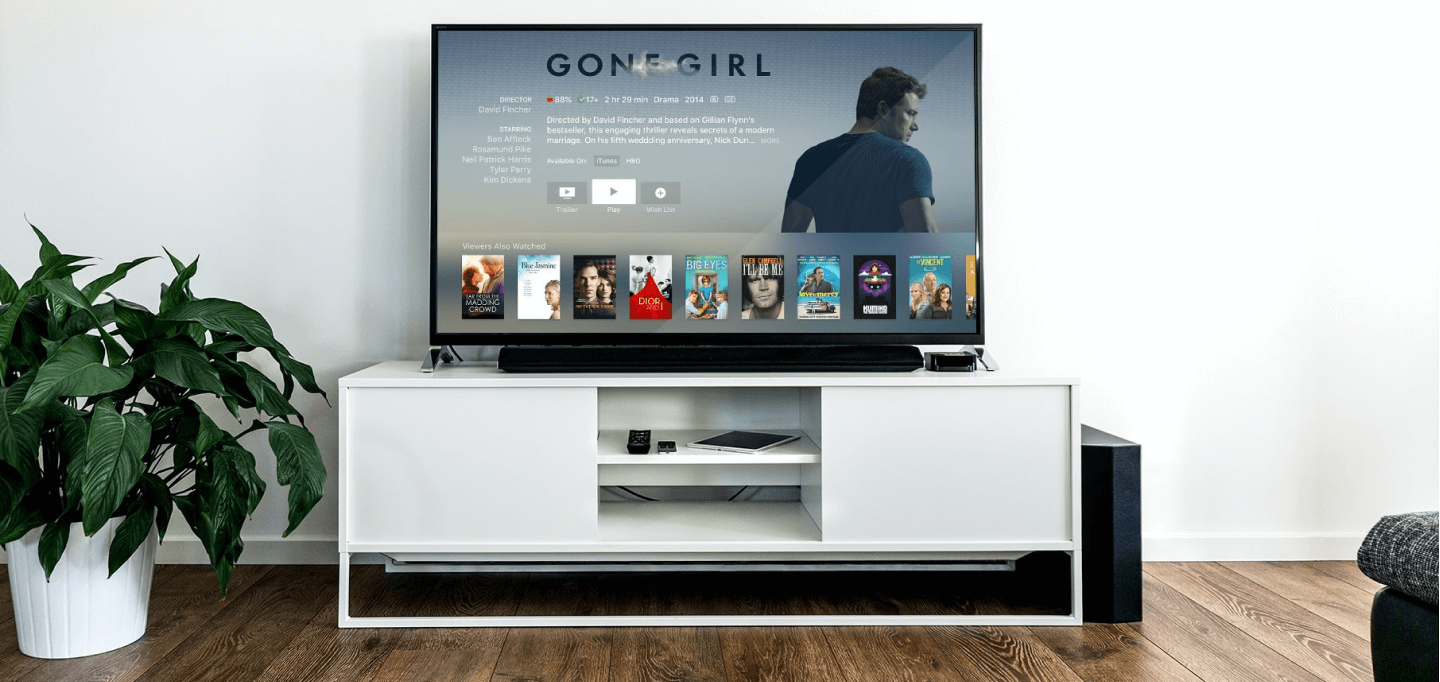
- What are the different types of flat screen TVs?
- What are the different types of smart TVs?
- What are the different types of LED TVs?
- What are the different types of TVs?
- What are the different types of big screen TVs?
- What are the different types of LCD TVs?
- what are the different types of lcd tvs?
- what are the different types of led tvs?
- Are there different types of 4K TVs?
- are there different types of 4k tvs?
- Buying Furniture Online
- Best Entertainment Chair
- Chair For Watching Tv
- Movie Style Couch
- Tv Room Couch
- Reclining Tv Sofa Set
- Chairs Sofa For Tv Room
- Best Chairs For Watching Television
- Leather Theatre Style Recliners
- Theaterseatstore Coupon
- The Theater Seat Store
- Best Cinema Furniture
- Best Home Theater Chairs
- Show Me Leather Recliners
- Leather Theater Seats Recliner
- Upholstered Theatre Seating
- Theater Seating Group
- Theater Seating Coupon
- Couch Recliners For Sale
- Sectional Furniture Sales
- Accessory
- Best Buy Tv Chairs
- Best Sofa For Watching Tv
- 4 Recliner For Tv Room
- Tv Lounger With Cup Holder
- 4 Seater Tv Watching Curved
- Non Power Tv Chair
- Best Tv Chairs For Back
- Tv Chairs With Power Lumbar
- Best Power Tv Chair
- Accessories For Home Theater
- Audience Risers
- Acoustic Panels For Home
- Red And Black Leather Couches
- Best Massage Chair Brand
- Best Brand For Recliners
- Best Buy Entertainment Furniture
- Custom Recliner Sofa
- Authorized Octane Seating Dealers
- Palliser Home Theatre
- Best Chair For Watching Tv
- Tv Vs Projector
- Tv Room In Basement
- What Is Qled Tv
- Wireless Surround Sound System For Tv
- Hdtv Antenna Amplifiers
- Ideal Seating Configuration In Front Of Tv
- Tv Room Furniture Layout
- Best Streaming TV Sevice
- Chase Lounge For Tv Viewing
- Best Ever Recliner
- Cuddler Sofas For Sale
- Small Space Black Leather Recliner
- Stadium Seating For Movie Room
- Standard Size Recliner
- Space Saver Theater Seating Recliner
- Theater Chairs That Support 350 Lbs
- Low Profile Movie Chair
- High Backed Recliner Chairs
- Bliss Zero Gravity Chair

